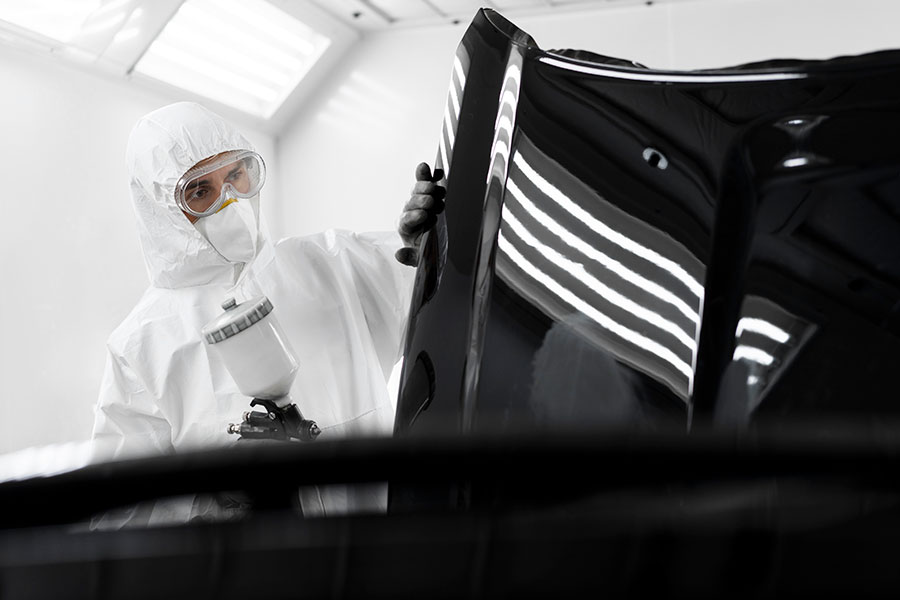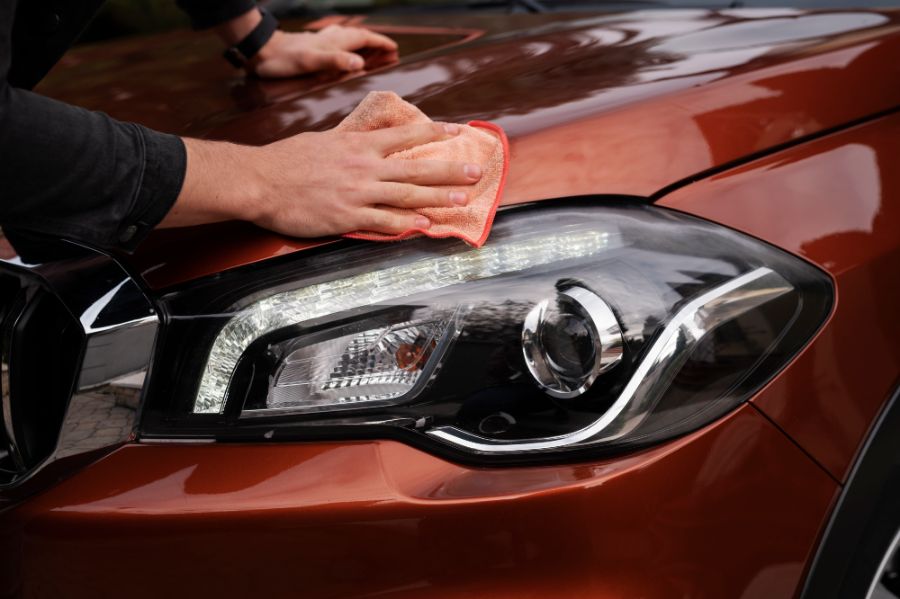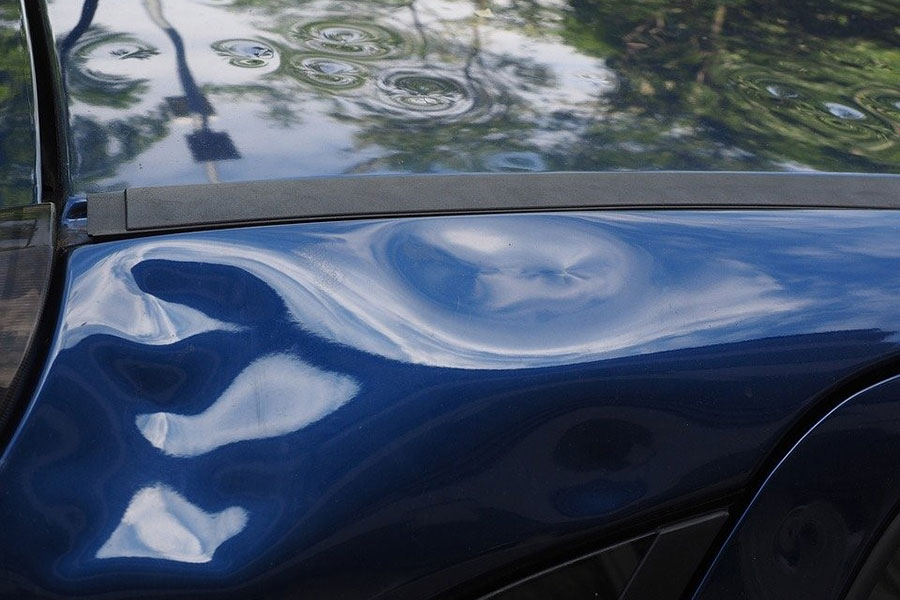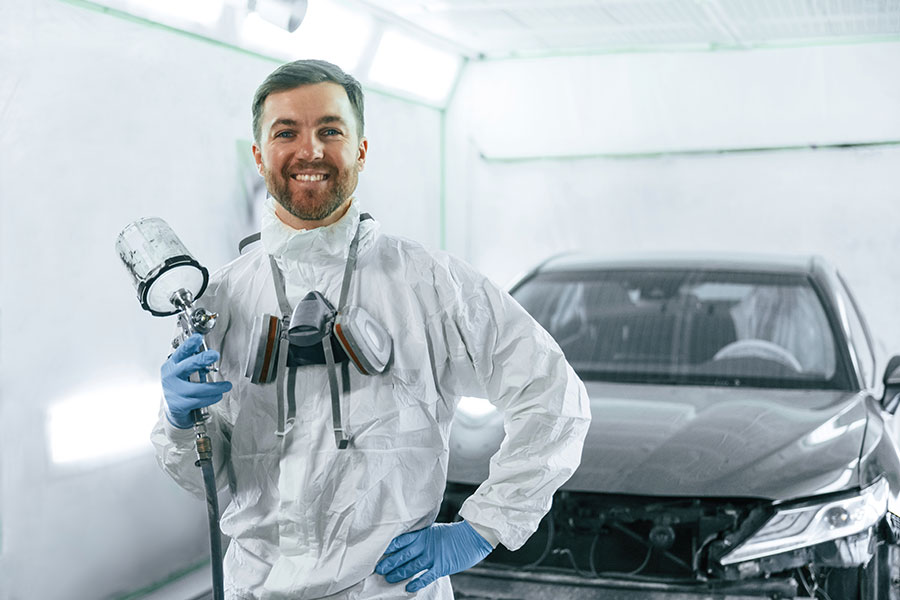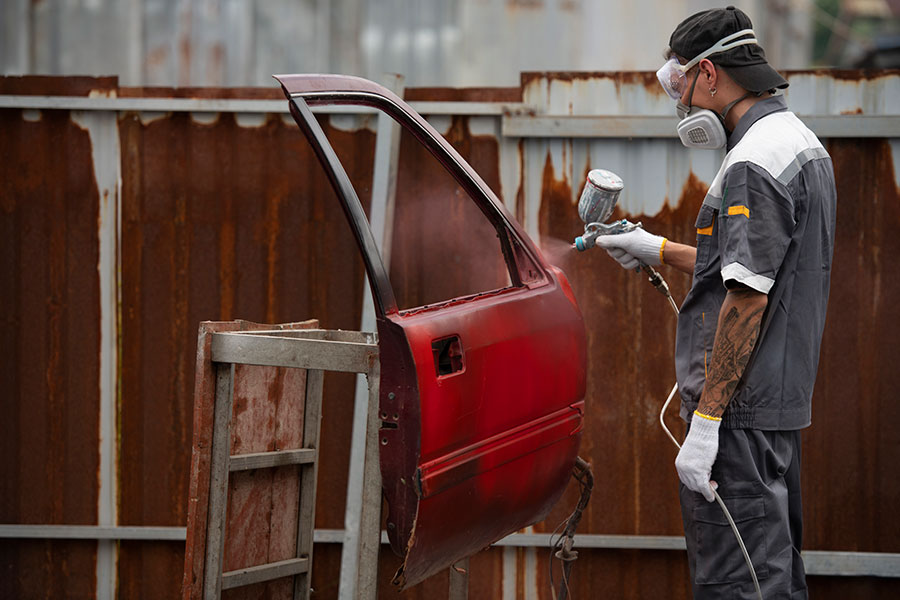Gone are the days of guesswork and eye strain in matching colors for your projects. With computerized color matching, precision meets efficiency, transforming how we approach color selection. This tech-savvy method not only saves time but ensures a perfect match every time, whether you're painting a room or designing a website. Dive into the world of computerized color matching where mistakes are minimized, and satisfaction is just a scan away. Embrace the change and let technology lead the way to flawless color coordination in all your endeavors.
Basics of Color Matching
Color Matching Defined
Color matching refers to the process of replicating a color using different mixes or matches of colors. It plays a critical role in industries like fashion, interior design, automotive, and printing. The goal is to ensure that colors look the same under various lighting conditions and when produced using different materials.
Color consistency is vital for brand identity and product quality. Imagine buying a shirt online only to find its color differs significantly in person. Such mismatches can lead to customer dissatisfaction and affect a brand's reputation.
Human Vision
Our perception of color is subjective. It varies from person to person due to differences in human vision. What looks like a perfect match to one individual might seem off to another. This variation poses a challenge in manual color matching processes.
Lighting conditions also influence how we see colors. A color might look different under sunlight compared to artificial light. Understanding these factors is crucial for accurate color matching.
Manual Matching Tools
Before the advent of computerized systems, manual color matching was the norm. It relies on human eyesight and a few basic tools:
- Color swatches: These are physical examples of colors used as references during the matching process.
- Pantone guides: Offer standardized colors for communication across industries.
- Light boxes: These devices provide consistent lighting conditions to evaluate color matches accurately.
Despite advancements in technology, these tools still play a role in today’s color matching tasks. They help in making initial selections before fine-tuning colors digitally.
Understanding Spectrophotometers
Spectrophotometer Basics
Spectrophotometers are advanced tools. They measure how much light gets absorbed by a substance. This process is key in color matching. These devices send light waves to hit the color sample. Then, they calculate the light that reflects back. The data creates a color profile.
Spectrophotometers work with a wide range of materials. They can analyze liquids, solids, and powders. This flexibility makes them invaluable in many industries.
Color Matching Automation
The transition from manual to automated color matching is significant. Spectrophotometers play a crucial role here. They compare the reflected light from the sample with known colors. This comparison happens in seconds, making the process fast and reliable.
Automated systems use this technology to ensure colors match perfectly every time. This is critical in industries where color consistency is vital. For example, in paint manufacturing or textile production.
Advantages Over Traditional Methods
The benefits of using spectrophotometers are clear. They offer precision that manual methods can't match. Traditional color matching relied on human vision. It was subjective and often inconsistent.
Spectrophotometers remove this variability. They provide objective measurements of color. This leads to fewer errors and less waste in production processes.
Another advantage is their efficiency. Manual matching is time-consuming. Spectrophotometers streamline workflows, saving companies time and money.
Key Components Inside Spectrophotometers
Light Source
The heart of a spectrophotometer starts with its light source. It emits light that later interacts with the sample. Different types have different light sources. Some use tungsten lamps, which are great for visible light. Others might use deuterium lamps for ultraviolet light.
This component is crucial. It ensures the sample gets illuminated uniformly. Without it, measuring color accurately would be impossible.
Sample Holder
Next, we have the sample holder. This part holds the material or liquid being tested. Its design is simple but vital for consistent results.
The sample holder allows the light from the source to pass through or reflect off the sample. It must position the sample precisely every time. This precision is key to getting reliable measurements.
Detector
Then comes the detector. This part captures the light after it has interacted with the sample. Detectors can vary based on their sensitivity and type of light they detect.
They convert light into a signal that the spectrophotometer can interpret. The detector's accuracy directly impacts the quality of color measurement.
Monochromator
The monochromator plays a pivotal role too. It separates light into its component wavelengths. Only specific wavelengths reach the sample.
This separation is essential for identifying colors accurately. It ensures that only the needed light spectrum is analyzed.
Processor
Finally, there's the processor. It's like the brain of the operation. The processor analyzes signals from the detector and converts them into data.
This data represents the color measured. The processor uses complex algorithms to ensure this data is accurate and meaningful.
Technology Behind Paint Matching
Paint Analysis
The journey to perfect paint matching begins with a detailed analysis of the original color. This process involves spectrophotometers, which were introduced in the previous section. These devices measure the color of a sample under different lighting conditions.
They capture data that is essential for the next steps. With this information, professionals can understand the color's properties better. This is crucial in both automotive and decorative paint industries where accuracy is key.
Algorithm Role
Software algorithms then take center stage. They use the data from spectrophotometers to find a match within a vast database of colors. These algorithms compare the measured color against known standards.
They can identify even the slightest differences in hue, saturation, and brightness. This ensures that the selected formula will closely resemble the original color once applied.
Custom Formulation
Creating custom paint formulas is an art and science combined. Here, precise color measurement plays a pivotal role. It ensures that every batch of paint not only matches visually but also behaves similarly under various lighting conditions.
Technicians adjust the formula based on the algorithm's recommendations. They might add specific pigments in calculated amounts to achieve the desired outcome. This step is critical for meeting customer expectations in both appearance and quality.
Quality Assurance
Before any mixed paint reaches a customer, it undergoes rigorous testing. This includes applying samples to panels and examining them under different lights. Such tests confirm that the paint matches across all conditions.
This phase guarantees that the final product will meet or exceed original specifications. It's a testament to how far technology has advanced in ensuring consistent quality in paint matching.
Achieving Precision in Color Matching
Material Challenges
Materials absorb and reflect light differently. This fact makes color matching a complex task. Paint on metal looks different from paint on plastic. The same color can vary under different lighting conditions.
Manufacturers must understand these differences. They use special lights to see how colors change. This helps them make better matches across various materials.
Calibration Techniques
Calibrating machines is key for accurate color matching. Each device, like scanners and printers, sees color slightly differently. Calibration aligns these devices to a standard setting.
Technicians use color charts and software for this process. They ensure that all machines interpret colors consistently. This step is crucial before starting any color matching work.
Standardized Conditions
Creating a controlled environment is essential for precise color matching. Light type and intensity can alter how we perceive color. For this reason, companies set up specific lighting conditions.
They might use daylight, fluorescent, or LED lights depending on the need. Keeping the environment consistent ensures that colors match perfectly every time.
Quality Control
Quality control is the final guard in the color matching process. Experts check the color accuracy against standards. They use tools like spectrophotometers to measure color values precisely.
Any mismatches lead to adjustments in the formula or process. This continuous monitoring ensures consistency in color quality across batches.
Exploring Color Studies and Terms
Hue Basics
Hue refers to the basic color. It's what we often call "color" in everyday language. For example, red, blue, or yellow are hues. Understanding hue is the first step in mastering color matching.
Hues play a big role in color perception. They can influence emotions and decisions. That's why choosing the right hue is crucial in design and art.
Saturation Levels
Saturation describes the intensity of a color. High saturation means a color is vibrant and full. Low saturation leads to a more muted, grayish appearance.
Colors with high saturation stand out more. They can make designs pop. But, too much saturation might overwhelm viewers. It's all about balance.
Luminance Insights
Luminance measures the brightness of a color. Bright colors can lighten up a space. Darker tones create a more subdued atmosphere.
Understanding luminance helps in creating depth and emphasis. It's key for achieving visual harmony in any composition.
Color Theory Application
Applying color theory improves color matching outcomes. It involves using knowledge about hues, saturation, and luminance together.
Knowing how colors interact is powerful. It allows for more accurate and appealing color combinations. This knowledge is especially useful in computerized color matching.
Metamerism Effects
Metamerism occurs when colors match under one light source but not another. It's a challenge in color matching because it can lead to unexpected results.
Different lighting conditions reveal metamerism. This phenomenon shows why viewing colors under multiple light sources is important for an accurate match.
Innovations in Matching Technology
AI Advancements
Recent years have seen a surge in the use of artificial intelligence (AI) and machine learning algorithms to revolutionize color matching. These technologies can analyze colors with incredible accuracy, far beyond human capabilities. They learn from vast databases of color information, making them smarter over time.
AI systems can now predict how different colors will look under various lighting conditions. This is crucial for industries like fashion and home decor. They ensure that the colors chosen during the design process appear as intended in the final product.
Portable Colorimeters
The development of portable colorimeters has greatly impacted the industry. These small, handheld devices can measure the color of an object instantly. They provide precise color readings anywhere, which is a game-changer for designers, painters, and manufacturers.
Portable colorimeters have made it easier to match colors on-site without sending samples back to a lab. This speeds up the design and production processes. It also ensures a perfect color match every time, reducing waste and saving money.
Future Trends
Looking ahead, we expect to see even more innovative trends in color matching technology. One exciting area is the integration of augmented reality (AR). AR could allow users to visualize how different colors would look in real-world settings directly through their smartphones or AR glasses.
Another potential trend is the development of more advanced color sensors. These could be integrated into smartphones, making high-quality color measurement accessible to everyone. This democratization of color technology could lead to new creative applications and industries.
Measuring Paint and Coating Colors
Spectrophotometer Use
Spectrophotometers have revolutionized how professionals measure paint and coating colors. These devices work by shining light on the paint surface and measuring the wavelength of colors reflected back. This process ensures precise color matching, even for complex hues.
They can store thousands of color formulas, making it easier to find an exact match or create new ones. The technology has become essential in industries where color accuracy is crucial, from automotive to interior design.
Environmental Impact
The environment plays a significant role in color measurement. Lighting conditions affect how colors are perceived and measured. For this reason, spectrophotometers are often used in controlled environments where lighting can be standardized.
Different types of light, such as natural daylight or fluorescent lighting, can cause colors to appear differently. It's critical to measure colors under consistent lighting to ensure accuracy. This attention to detail helps avoid costly mistakes in color matching and production.
Coating Types
Not all coatings are created equal when it comes to color measurement. The three main types—opaque, transparent, and metallic—require different approaches.
Opaque Coatings
Opaque coatings are the easiest to measure because they do not allow light to pass through. Spectrophotometers can easily capture their color without interference from underlying materials.
Transparent Coatings
Transparent coatings pose a challenge because they can reflect and transmit light. To accurately measure these coatings, professionals might use a combination of techniques to isolate the color of the coating itself from any influenced by what's underneath.
Metallic Coatings
Metallic coatings are unique because they contain flakes that create a sparkle effect. This characteristic makes them difficult to measure with standard methods. Specialized spectrophotometers that can account for the directional properties of metallic flakes are required for accurate measurement.
Summary
Through understanding the basics of color matching, the role of spectrophotometers, and the latest innovations in technology, you've gained insight into the precision and complexity behind matching paint and coating colors. This knowledge empowers you to appreciate the science and art of achieving the perfect color match, whether for industrial applications or personal projects. The journey from basic concepts to exploring color studies and terms has equipped you with a solid foundation in computerized color matching.
Now, imagine applying this knowledge to your next project or discussion about color technology. Share your insights, ask questions, or start a conversation with peers to explore further. The world of color matching is vast and constantly evolving—stay curious, keep learning, and let your newfound understanding enhance your projects and discussions. Ready to dive deeper? Keep exploring and experimenting with colors!
Frequently Asked Questions
What is computerized color matching?
Computerized color matching uses technology, such as spectrophotometers, to ensure precise matching of colors in materials like paint. This process is quick and highly accurate, making it essential for industries requiring exact color replication.
How do spectrophotometers work in color matching?
Spectrophotometers measure the intensity of light reflected from a sample to analyze its color. This data is then used to create an exact color match, streamlining the process and enhancing accuracy in applications like paint mixing.
What are the key components of a spectrophotometer?
The key components include a light source, a sample holder, a monochromator or filter for selecting wavelengths, detectors for measuring light intensity, and a digital display or output to show results. These parts work together to precisely measure colors.
Why is achieving precision important in color matching?
Precision in color matching ensures that the final product meets the specific requirements and expectations of clients or industries. It minimizes errors and waste, leading to cost savings and high-quality outcomes in manufacturing and design processes.
Can computerized color matching be used for all types of paints?
Yes, computerized color matching can be applied to a wide range of paints and coatings. Innovations in technology have made it possible to accurately match colors across different types of paint, ensuring consistency in both visual appearance and quality.
How has technology innovated the field of color matching?
Technology has greatly advanced the field by introducing more efficient and accurate tools like spectrophotometers. Innovations also include software that can predict optimal formulas for color matching, reducing time and resource expenditure while improving outcome precision.
What is the importance of understanding color studies and terms in matching?
Understanding color studies and terms is crucial for effectively communicating requirements and expectations in color matching. It ensures that all parties involved have a common language to describe hues, saturation, brightness, etc., facilitating more accurate outcomes.
